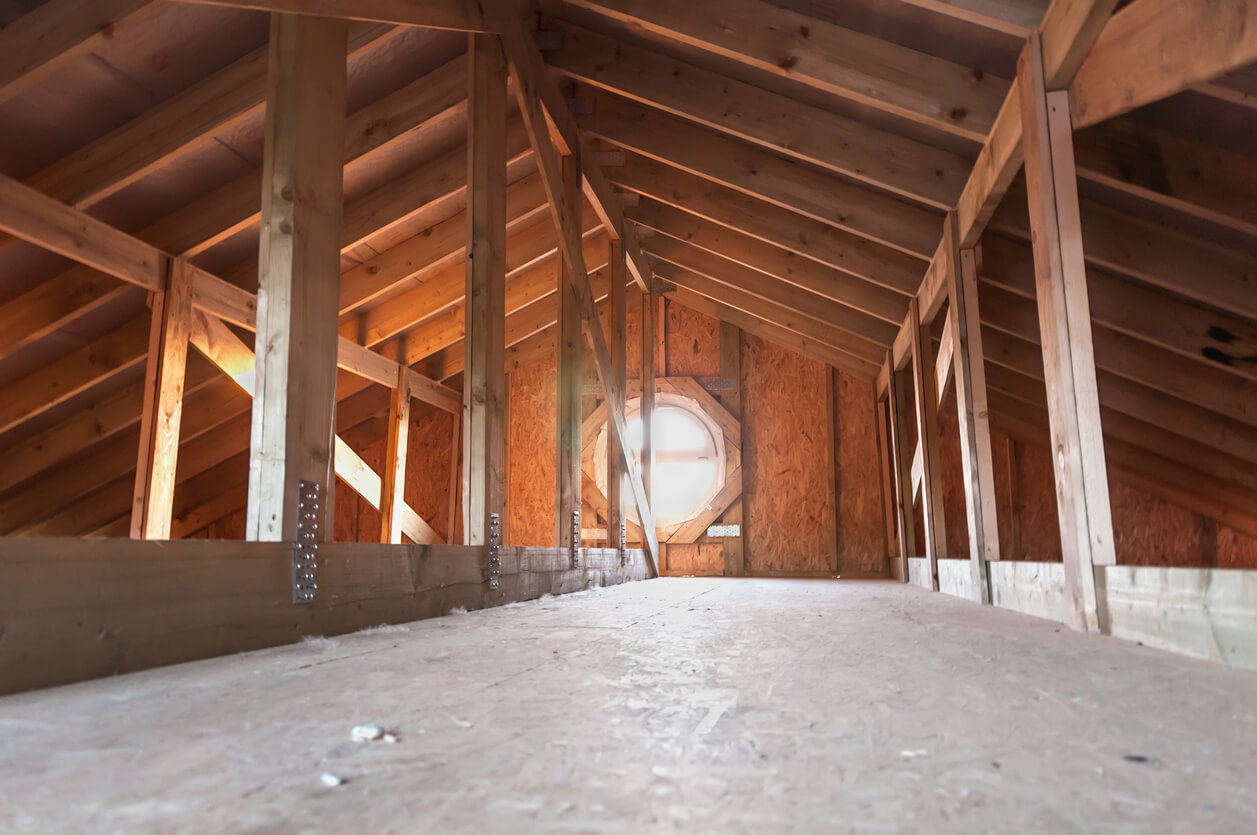During the summer, temperatures in Connecticut can reach well past the 90s — sometimes even hitting the 100-degree mark.
When temperatures are this hot and the sun is shining directly onto your roof, your attic will heat up to unsafe temperatures. Temperatures inside of the attic may reach up to 50 degrees hotter than the temperature outside.

The Negative Effects of a Hot Attic
When your attic reaches dangerously hot temperatures, being unable to go into your attic isn’t the only thing that happens — serious problems can occur.
- Roofing materials (like asphalt) can literally overheat to the point of melting and deteriorating. This will result in a shorter lifespan of the roof and premature replacement.
- As shingles begin deteriorating further, your roof will become susceptible to roof leaks. Once water gets behind the shingles, water damage, rot, and mold will now further damage your home until these problems are addressed.
- Extreme temperatures like this are oftentimes no match for your home’s insulation. This heat will enter your home which will cause your cooling system to work harder to cool your home. As a result, you will have to deal with increased wear and tear on your cooling system and higher energy bills.
How to Cool Down Your Attic
In order to prevent your roof from becoming damaged by the effects of an overly hot attic, there are some steps you’ll need to take to prevent it from happening.
- Add a Ventilation System – Every attic should have ventilation AND an adequate amount of it (based on its size). An attic experiencing temperatures over 100 degrees means your ventilation system is either not doing its job or is non-existent. A professional roofer will be able to explain which ventilation system is best for your home (gable vents, soffit vents, ridge vents, etc.), as well as providing you with an estimate of the optimal amount.
- Address the Insulation – Old insulation isn’t always able to do its job of keeping the temperatures between your home and the attic (and outside) separate. Ensure your home has the proper amount of insulation and that it’s of the right quality — preferably an R-factor of 19 or better. Insulation and a ventilation system go hand in hand, so be sure to address both.
- Install a Fan – Once you have a proper ventilation system with quality insulation, you may want to add an attic fan for good measure. Attic fans and other electric ventilation systems do a great job of removing hot air from attics. Pair one of these with a thermostat and this fan will turn on once temperatures within the attic begin increasing.
When your attic is so hot that you can’t even go into it for a few seconds, that’s how you know something is wrong.
Don’t deal with a hot attic and all of the negatives that come from one. Instead, make sure you give our Fairfield roofing contractors a call. We’ll install all of the ventilation your roof needs, as well as an inspection of your current roof for any damage it may have previously sustained.
